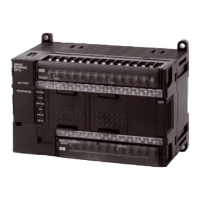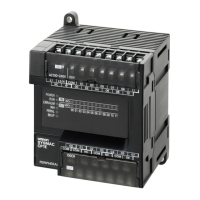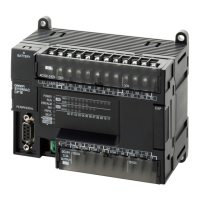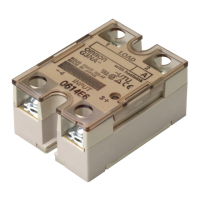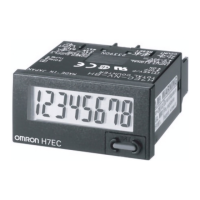32
Functions Listed by Purpose Section 1-4
Pulse output
functions
Making simple pulse
outputs
CPU Unit PC Setup and
SPED(64)/
PULS(65)
instructions: Pulse
outputs can be
made from
standard
Transistor Output
Units.
Set the pulse output word
address (specify a word from
IR 100 to IR 115).
Frequency: 20 Hz to 1 kHz
Duty factor: 50%
Making output to pulse
train input motor driver
(servomotor driver or
stepping-motor driver)
for positioning
Pulse I/O Board Ports 1 and 2:
Single-phase
pulse output with
without accelera-
tion/deceleration
(using SPED(64)
instruction)
Trapezoidal
single-phase pulse
output with same
acceleration and
deceleration rates
(using PLS2(--)
instruction)
Trapezoidal
single-phase pulse
output with differ-
ent acceleration/
deceleration rates
(using ACC(--)
instruction)
Frequency: 10 Hz to 50 kHz for
servo driver; 10 Hz to 20 kHz for
stepping motor
Duty factor: 50%
Pulse output PVs stored in
SR 236 to SR 239.
Performing
time-proportional
control of temperature
using variable duty fac-
tor pulse output function
Ports 1 and 2:
Variable duty
factor pulse output
(using PWM(--)
instruction)
Frequency: 5.9 kHz, 1.5 kHz,
91.6 Hz
Duty factor: 1% to 99%
Pulse output PVs stored in
SR 236 to SR 239.
Analog setting By setting the time for
which a conveyor belt is
temporarily stopped, the
low-speed feed rate
over a fixed distance
can be simply controlled
using the adjuster.
Analog Setting
Board
Analog setting
function
Values indicated by the adjuster
are converted to digital values
between 0 to 200 (BCD) and are
stored in IR 220 to IR 223.
Analog I/O Obtaining temperature
data, pressure data, etc.
Analog I/O Board Analog I/O
function
Analog control
also possible when
used in combina-
tion with PID(--).
Two input points and one output
point for analog values (0 to 5 V, 0
to 20 mA, 0 to 10 V)
Purpose Unit/Board Function Details

